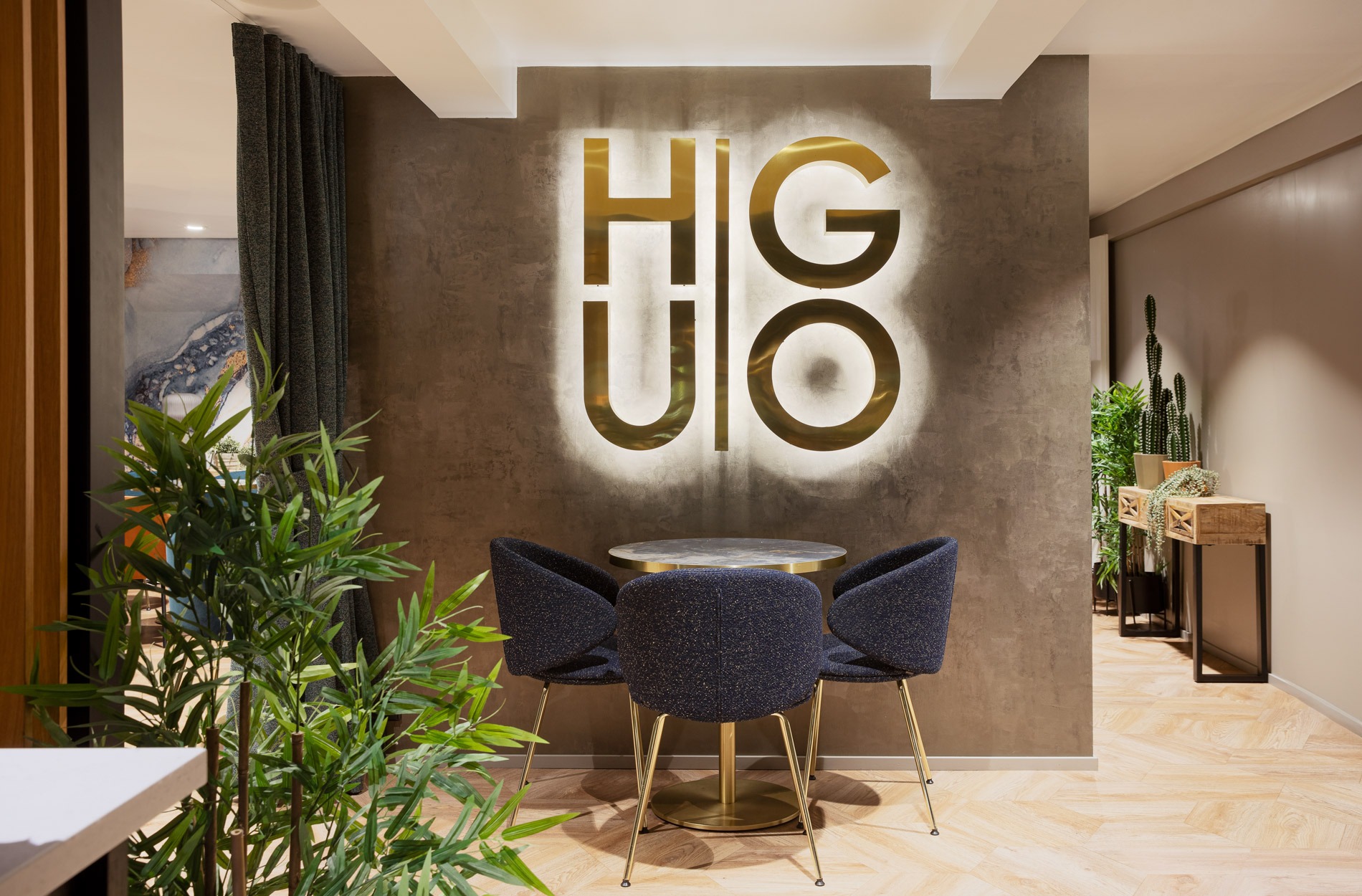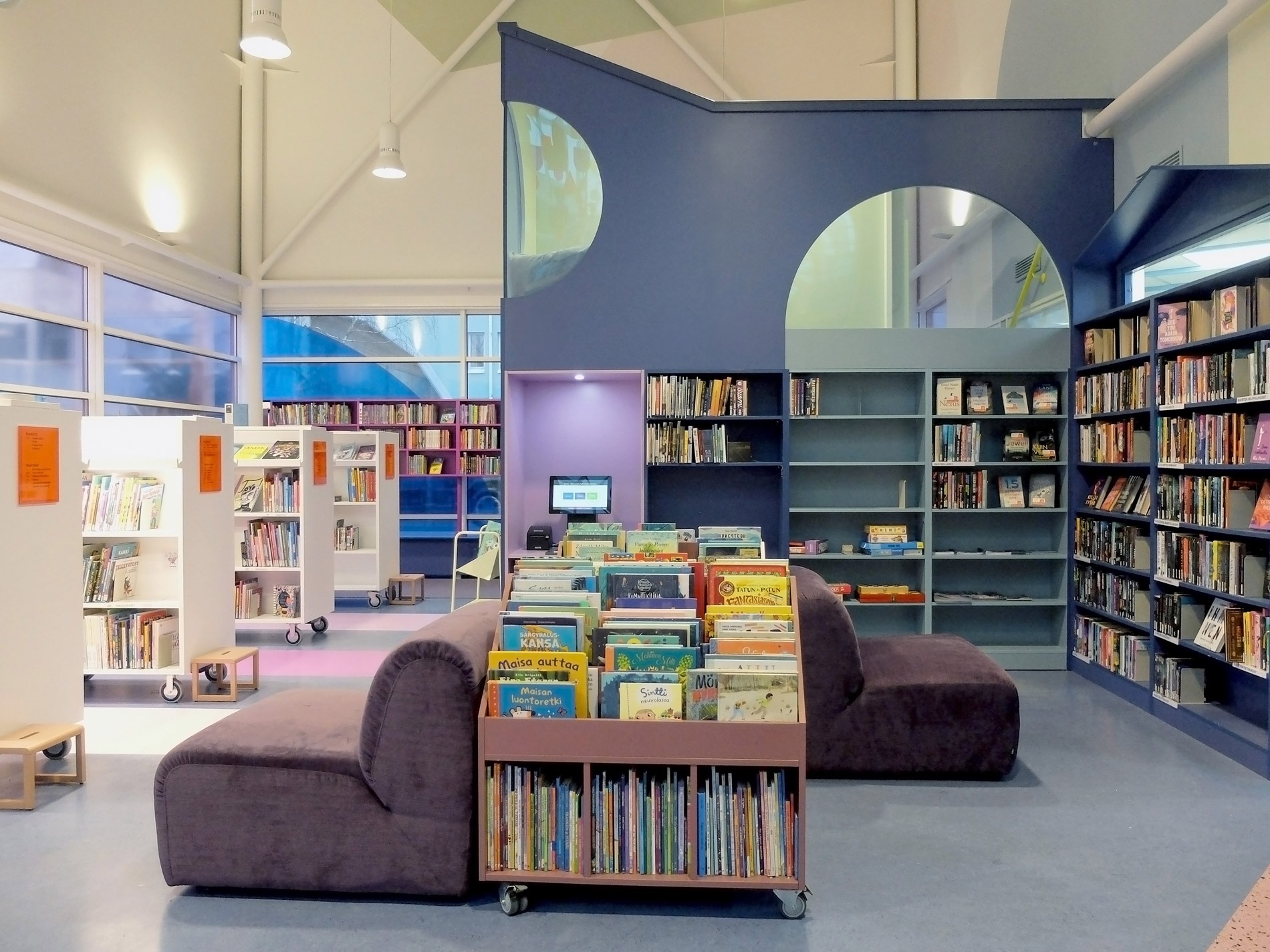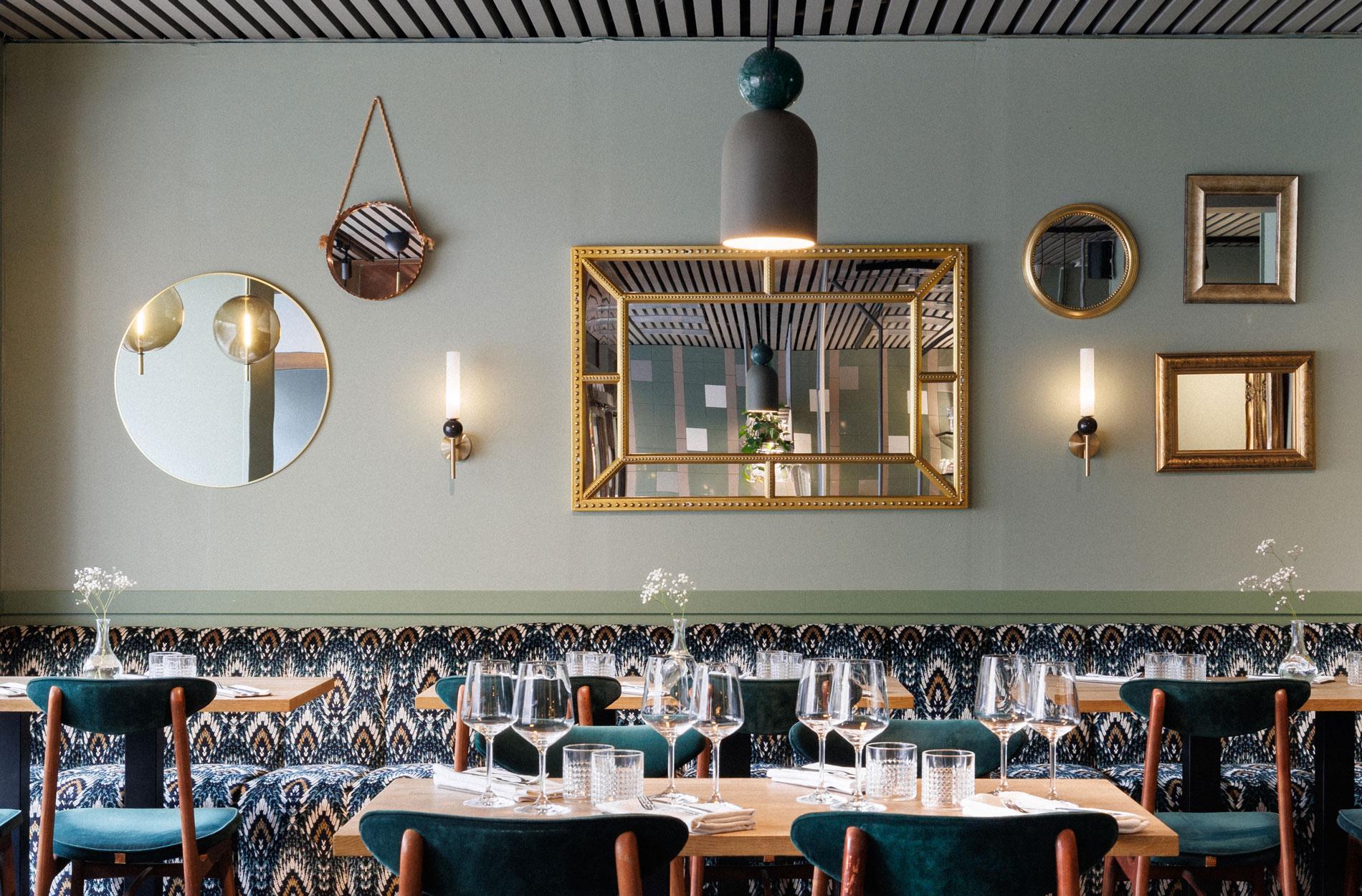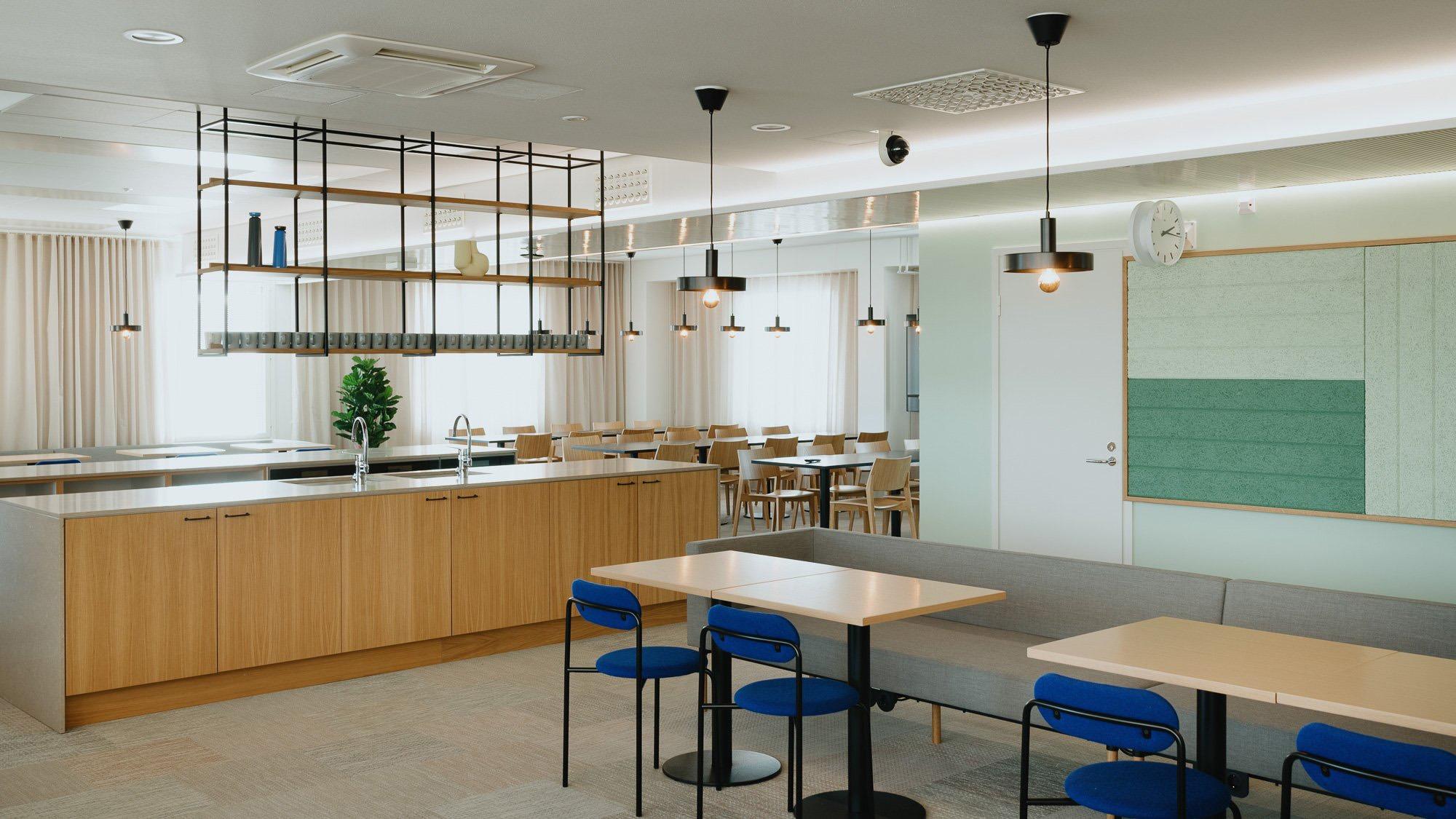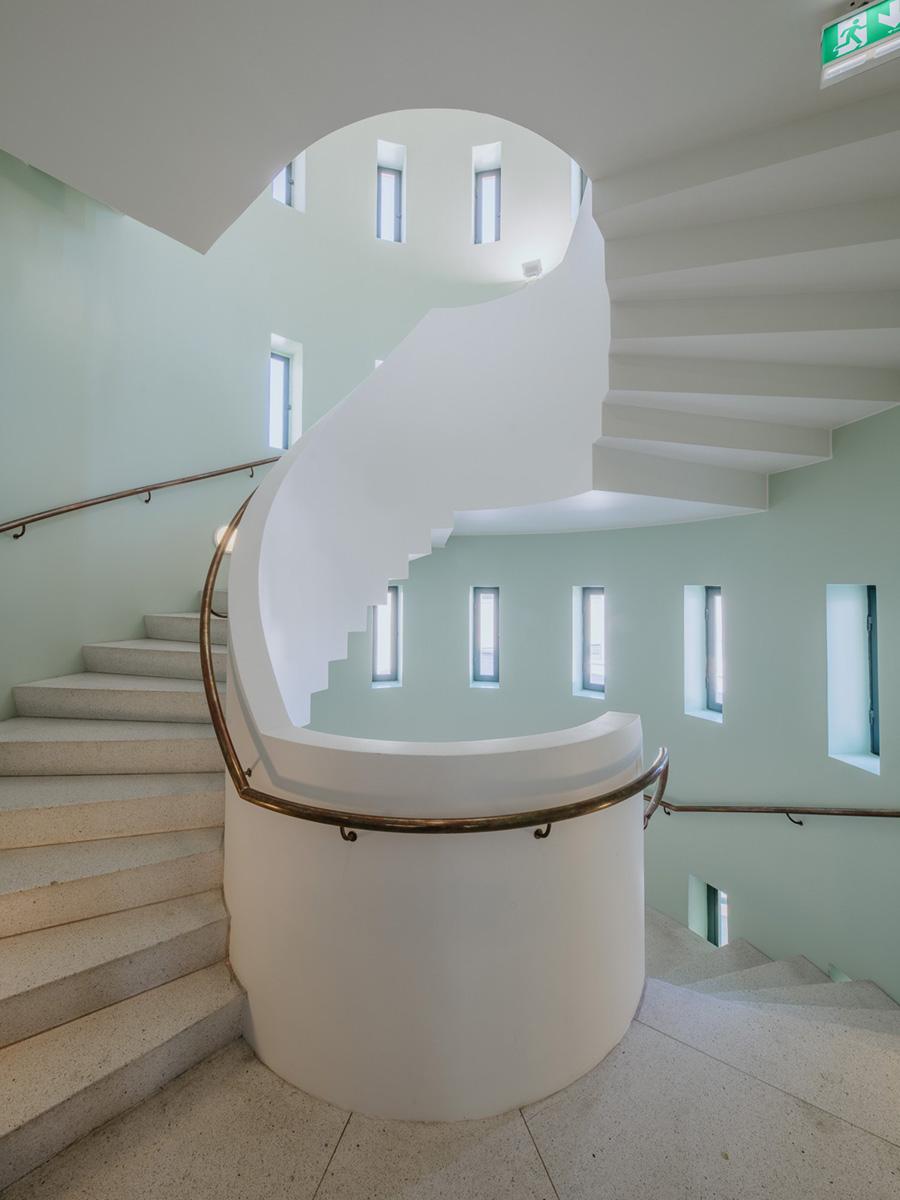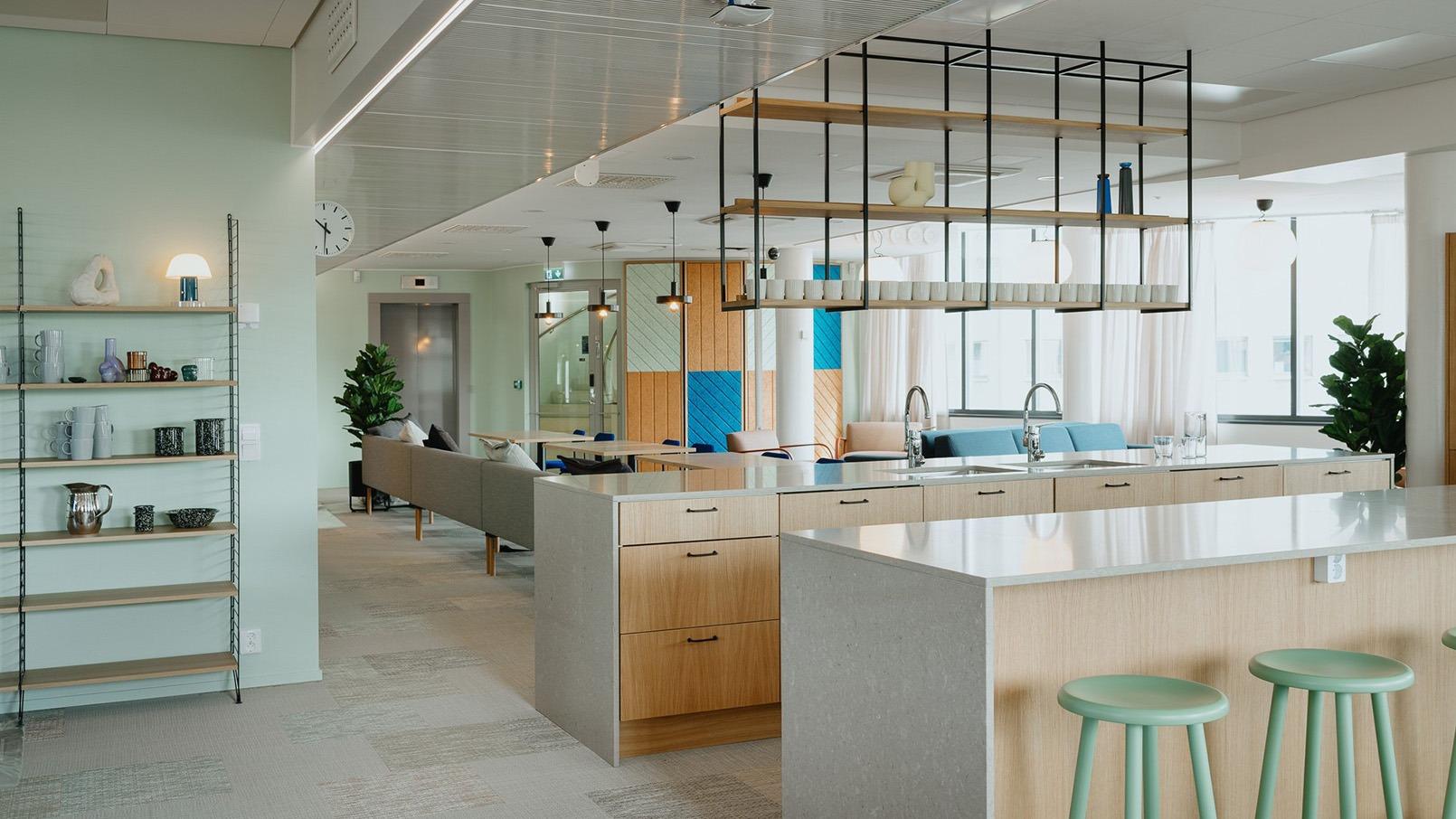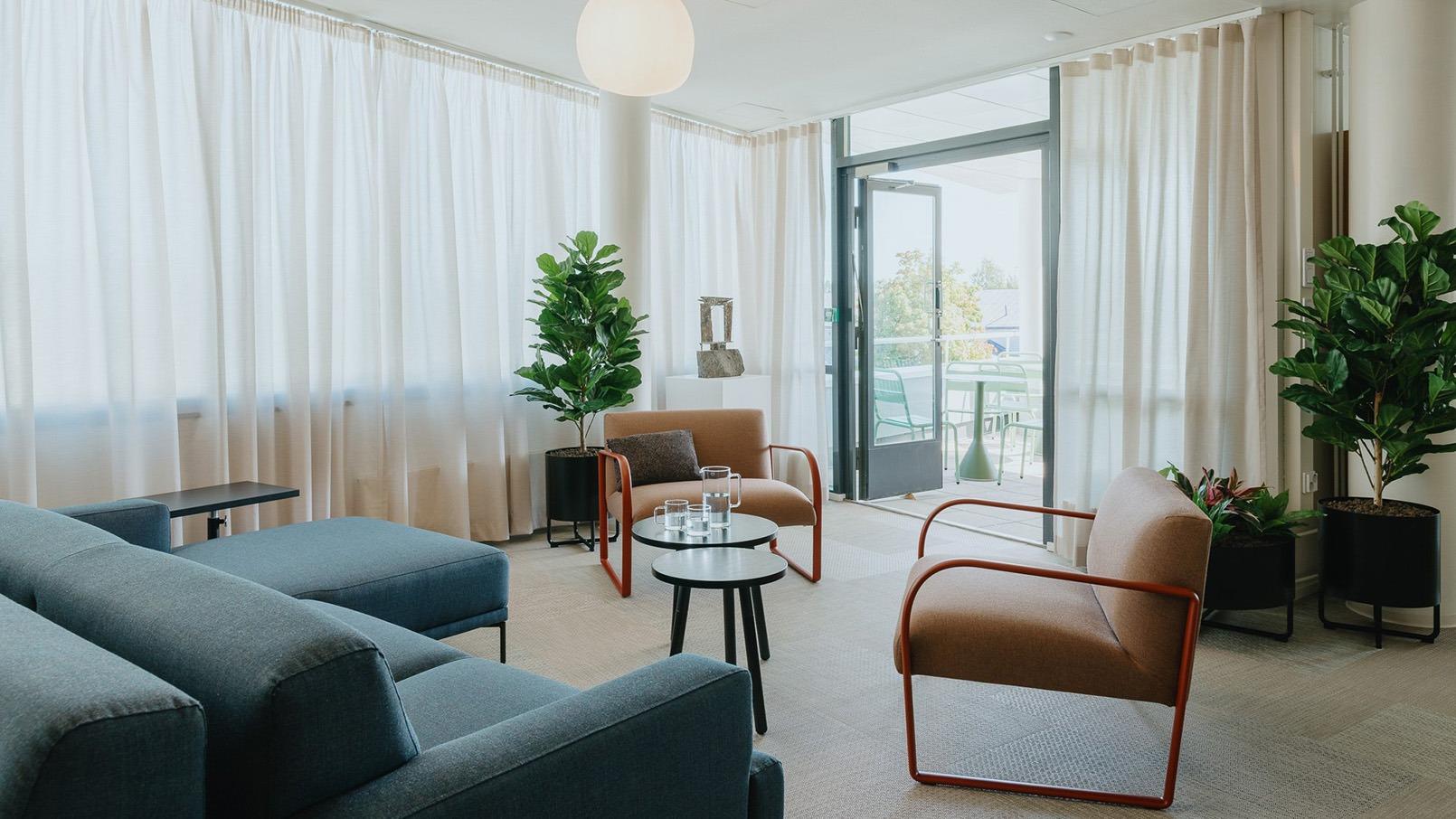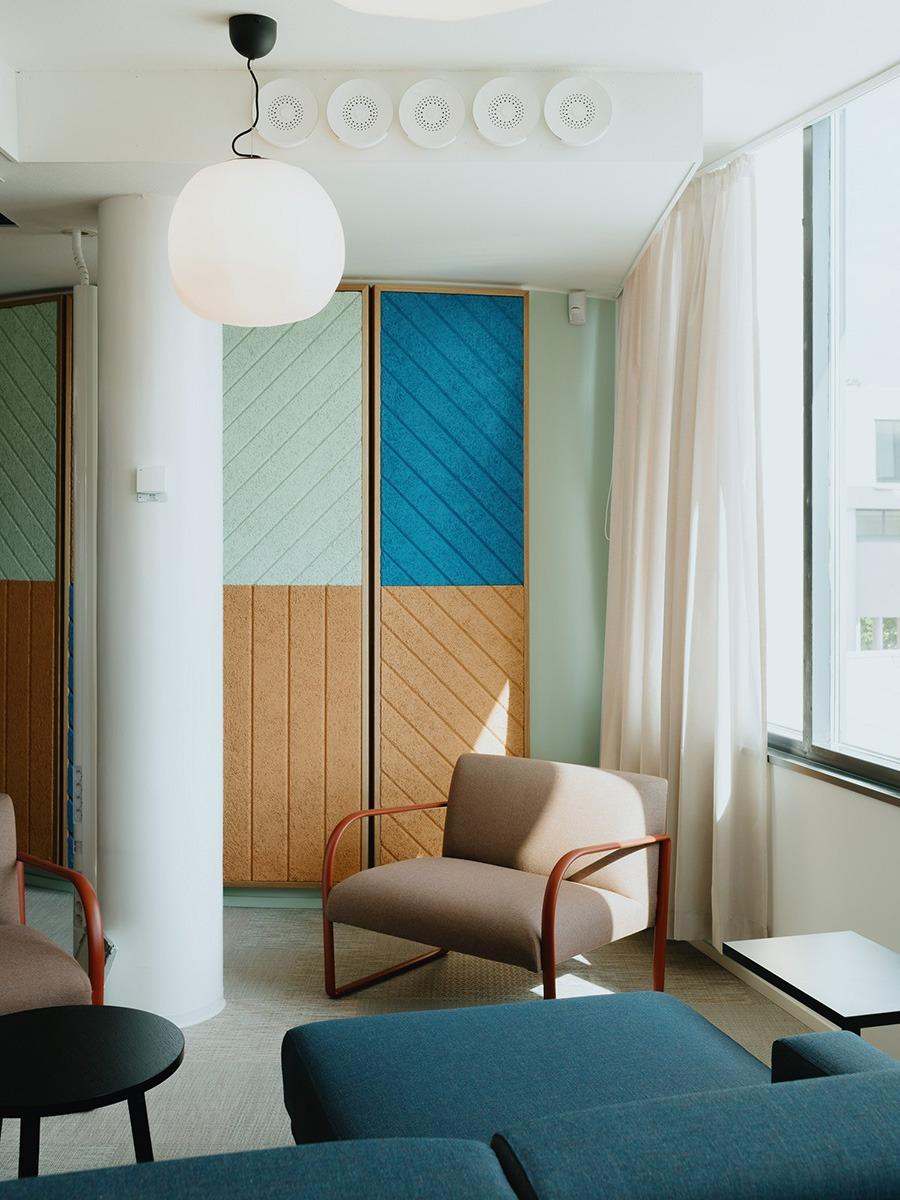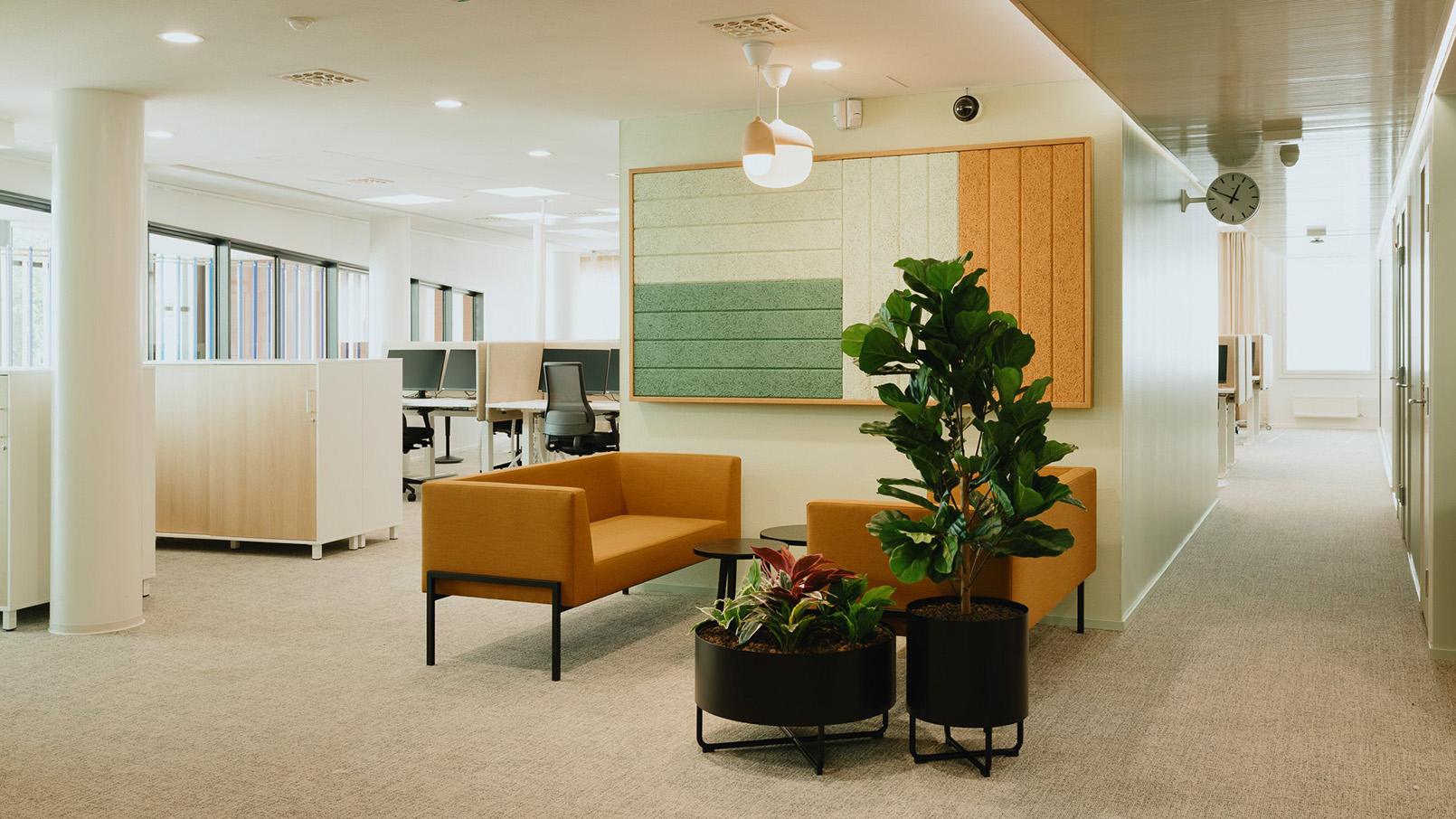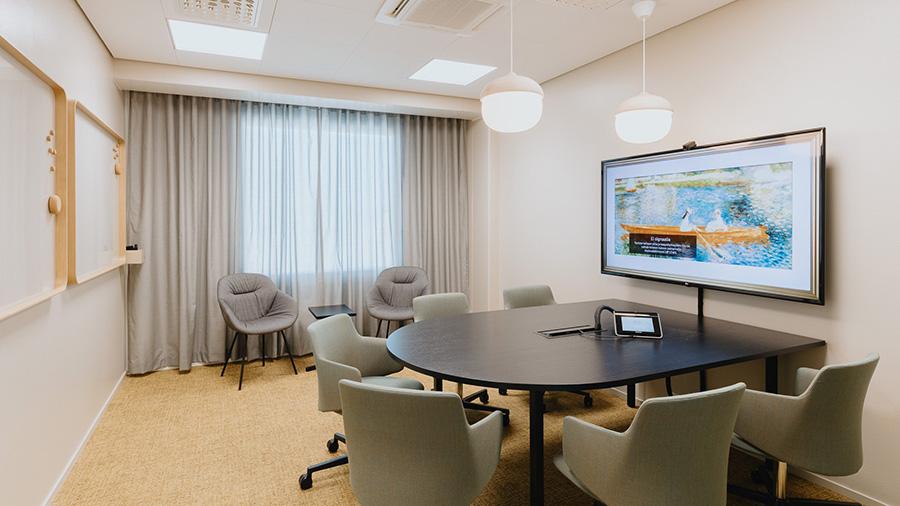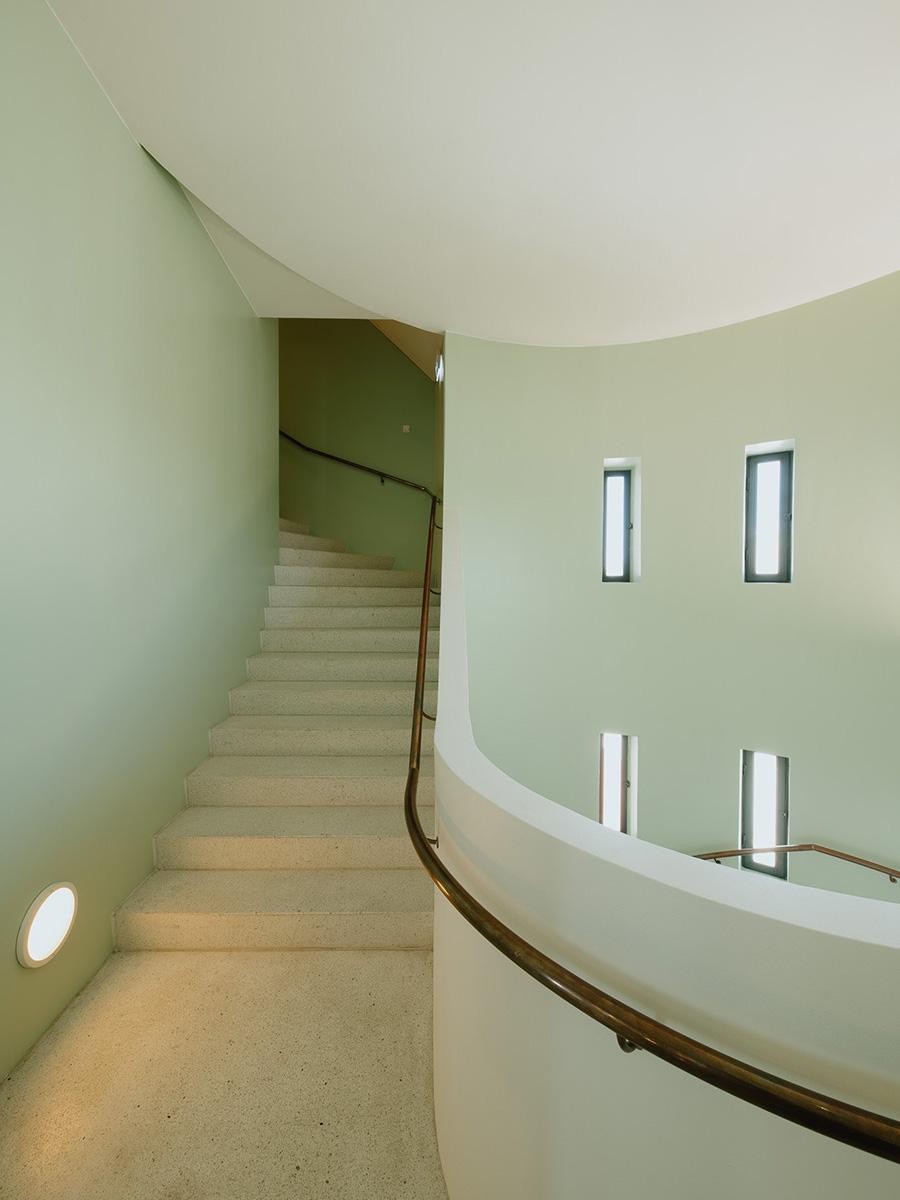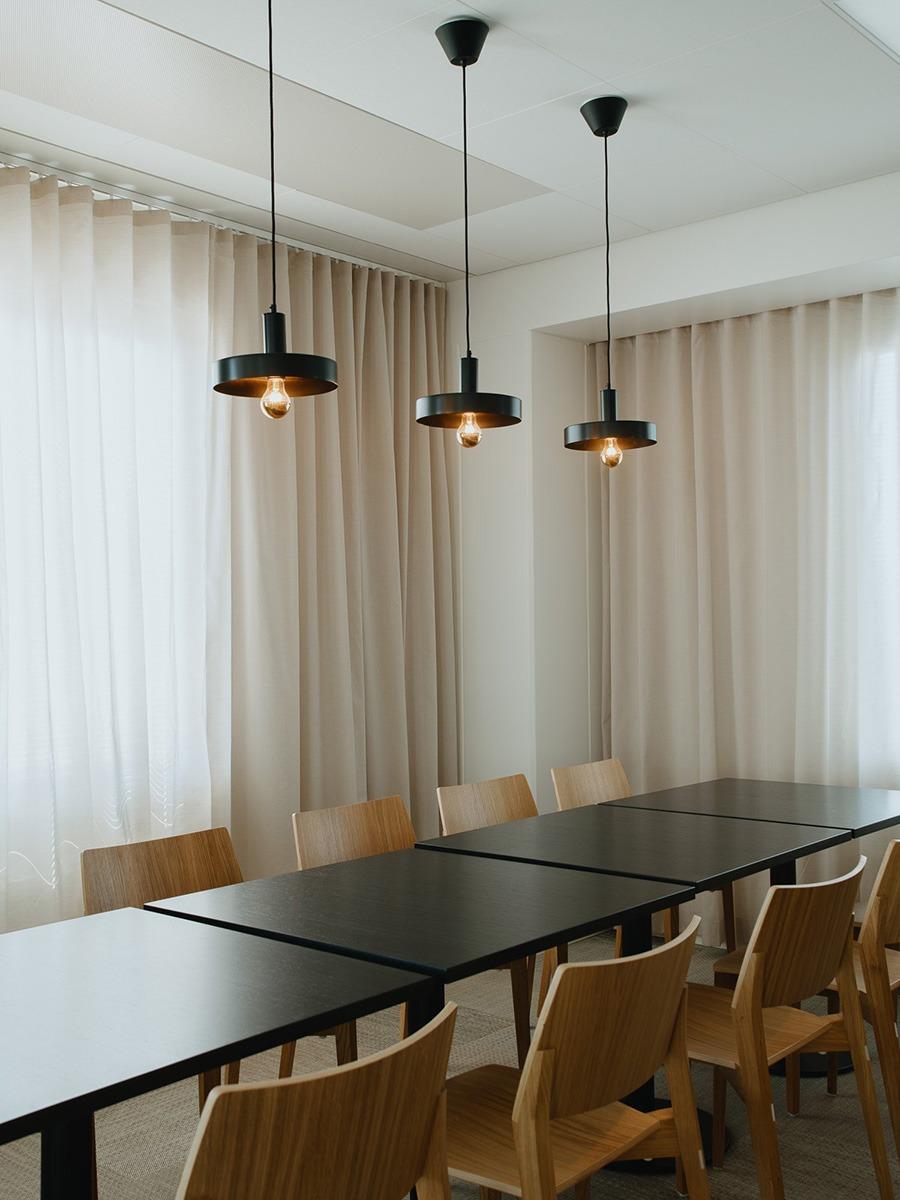Harmonious and elegant spatial concept with a lower carbon footprint
Tulliportinkatu in Porvoo houses the shared office and customer service of the tax administration and the National Land Survey of Finland (NLS). The renewed government office building in Porvoo is unique in many ways, and it is the first project where two government offices operate in the same premises. It was also a circular economy pilot project, during which Senaatti tested long- and short-term circular measures in a renovation and alteration project. The ambitious recycling and circular economy objectives also guided the spatial design. Visually, the new working spaces and customer service areas are neutral, in line with the preferences of the employees of both offices.
A circular economy pilot project where two government offices moved in under the same roof
The new government office building is the workplace of around 90 experts: 35 NLS and 60 tax administration employees. The building, which was originally built in 1993, was turned into a flexible working environment that feels motivating to the employees of both offices. In the customer service areas, the focus was on the clear and comfortable use of services. Particular attention was paid to a sense of privacy for customers, guidance and smooth and ergonomic daily work. The aim was to create a new kind of concept that gives the two offices an equally important role in the building. The renewal covered an area of 1,440 square metres, and the design drivers were defined in collaboration with Senaatti and the two offices.
Design drivers:
- the circular economy: shared spaces, repair that preserves the original structures, circularity of building supplies, recycling and avoiding plastic
- being a pioneer: setting an example for government offices of the future
- joint use: sensible, flexible and attractive model for shared facilities
- the customer experience: security, functionality, privacy
- innovativeness: new ideas, innovative solutions
Rune & Berg Design was responsible for designing the customer service and working spaces in an inclusive manner, taking into account sustainability. The new customer service facilities of the government office building offer the services of the tax administration and the NLS under one roof, and in a way that meets customers’ privacy requirements better. Experience was also an important priority in the design of the working environment, as we listened to the opinions of both employee groups on moving to the shared office and the prerequisites for a smooth working experience. We analysed the needs of each office for different spaces and the links between these. The employees wanted functional, flexible and diverse spaces. The working environment is divided into shared zones that differ in terms of their soundscape and functionality, such as a quiet area for concentration and an interactive area. The use of the space is guided by commonly agreed procedures and the sharing of expertise.
Putting the circular economy into practice through furniture and material choices
In addition to the employee and customer experience, sustainability was an important element of the design. Lifecycle and circular thinking and the principle of reducing plastic guided the selection of the surface materials and furniture. The purchasing of the furniture and materials was a three-phase process: careful analysis, followed by the inclusion of circular economy criteria in furniture tendering and the eventual selections. The selection criteria included the length of the warranty period, durability in use, materials, the availability of spare parts, and disassembly and recycling at the end of the life cycle. The recycling objectives specified in the construction project provided the framework when the construction site functions were put out to tender.
The Porvoo government office building is an excellent example of how designers can influence the carbon footprint of construction in many ways. The criteria specified at the designer’s desk were implemented in practice. In the project, existing structures were preserved as far as possible. For example, the existing suspended ceilings were utilised, and the recycling target for new ceilings was 30 per cent. Natural and recycled materials were used, whenever possible. The flooring material is almost fully recycled. However, the end result does not look second-hand. The harmonious and natural colour scheme and materials create a balanced and calm atmosphere that is fitting for both the tax administration and the National Land Survey of Finland.
We want to challenge all our colleagues and partners to reduce the carbon footprint of the built environment!
Would you like to learn more about the government office building in Porvoo?
Read the articles on the co-working and circular economy aspects of the Senaatti project or the shared use of the space.
Get familiar with other similar projects
